
STRONGFELT July 2021 NEWSLETTER LINK: Release
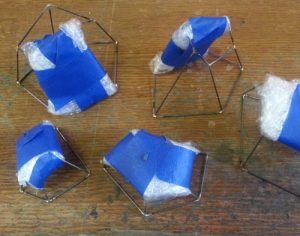
With all the felting for the piece completed, I sent all the individually worked components back to Sarah West in Raleigh. Sarah had to finish brazing the metal forms that she had left incomplete so that I could manipulate them under my sewing machine pressure foot to free-motion embroidery the felt panel on each. To protect the white felt from getting dirty as well as from burning in this process, she wrapped the felt panel in plastic first and then covered it with wet paper towels. Brilliant!

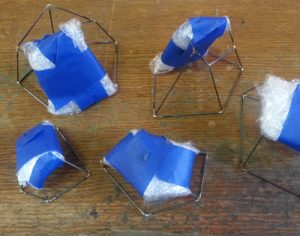
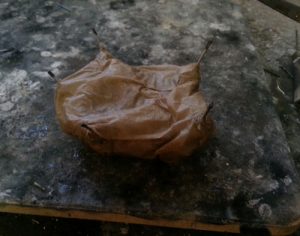
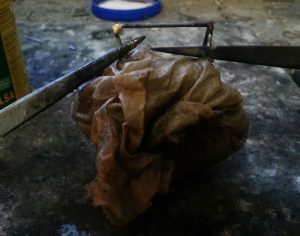
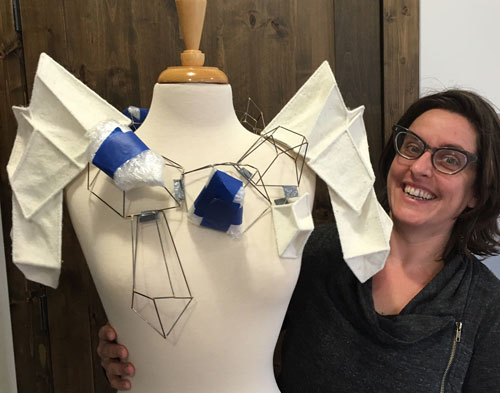
Sarah came to Asheville with all the components and we arranged them on a body form, marking which pieces would be connected together. She then returned to her studio to prong set the pieces of vinyl and to link all the components. At this point, I was leaving the country to teach workshops in Santiago, Chile and had to pass off the remaining responsibilities to her. I am grateful for her final push to complete the piece, find an excellent model and photographer, coalesce our processes and concepts about the piece into a coherent statement and submit the work on time.

Our Artists’ Statement:
This piece uses the interplay of steel and felted wool to create a transformation of materials into a wearable protective shield. The shoulder components were created by encasing the underlying brazed steel structure in a seamless skin of wet felted wool fiber. As the felt shrunk, the forms compressed to alter their original shape, suppressing movement and sound. The work further eliminates sound by introducing pieces of vinyl from a heavy metal record. The free-motion embroidery is both inspired by the pattern of the record and the intensive energy of the music. In the act of wearing it, there is a final transformation from an individual’s natural state to one that is powerfully guarded.
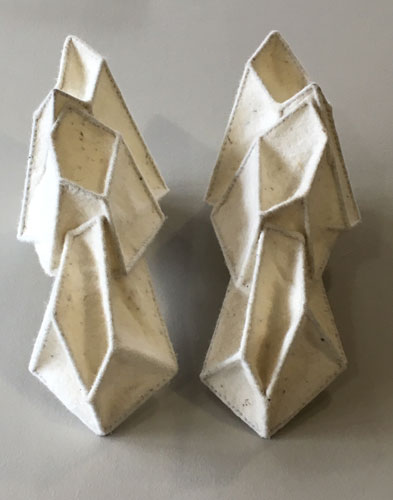
When it came time to encase the large angular shoulder pieces in a continuous skin of felt, I had some trepidation as they were the largest forms I had tried to skin and were also more pointy than previous objects I had worked. I had two viable options. One option was to create a 2-D template far larger than the form to allow for the high shrinkage needed to create a thin felt skin. I could lay the wool around the template and after initial felting I could make a cut in the skin, remove the template, insert the metal armature, stitch up the cut and proceed with fulling the felt taut around the form. I was concerned with this method because the felt would be very delicate when I inserted the metal form in order to assure I could seal the large cut without visual evidence. I feared the points would puncture the felt.


Instead, I chose to wrap each metal shoulder armature in many layers of plastic sheeting to enlarge the surface area three-dimensionally. In this method the armature is already inside so my cut would be very small, only big enough to allow me to remove the smaller pieces of plastic one at a time. I could agitate the felt as I reduced the amount of plastic inside the skin providing space for shrinkage little by little without the metal points coming in contact with the delicate felt. I avoided shrinking the area of the small opening to keep the felt less integrated so that when all the plastic was removed I could draw the cut closed with a basting stitch and the wool fibers would still felt together, bridging the cut.
[new_royalslider id=”22″]
I continued felting the skin until it was nearly fulled and taut against the metal armature. I cut two slits where I needed to have the metal exposed so that Sarah West could connect the shoulder pieces to the metal forms encircling the neck. I then hand stitched the felt skin around the wire structure to give the form more angular definition.


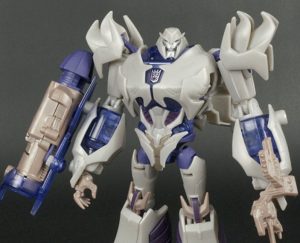
I am doing a little retrospective blogging of this project, as there just wasn’t time to post during the time of making and SNAG’s Exhibition in Motion fashion show of large scale sculptural works is this Saturday, May 21 from 8-9 at the Grand Ballroom of the Renaissance Hotel in downtown Asheville!
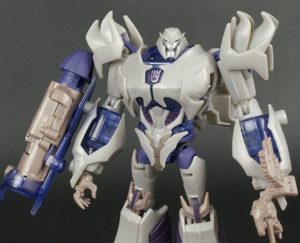 After our initial experimentation with the incorporation of my felt skin encasement techniques over her steel wire forms (see prior posts), Sarah West and I had a phone conversation to devise our collaborative piece. One of our sample structures fit the curvature of a shoulder and was reminiscent of the high shoulder pads popular in the 80’s that alluded to the defensive strength of a football uniform’s shoulder padding or the angular shaped shoulders of the Transformers, a robotic toy line, also from the 80’s. Remember these!! We decided to pursue a large neckpiece incorporating oversized shoulder pieces and Sarah began making the structure.
After our initial experimentation with the incorporation of my felt skin encasement techniques over her steel wire forms (see prior posts), Sarah West and I had a phone conversation to devise our collaborative piece. One of our sample structures fit the curvature of a shoulder and was reminiscent of the high shoulder pads popular in the 80’s that alluded to the defensive strength of a football uniform’s shoulder padding or the angular shaped shoulders of the Transformers, a robotic toy line, also from the 80’s. Remember these!! We decided to pursue a large neckpiece incorporating oversized shoulder pieces and Sarah began making the structure.
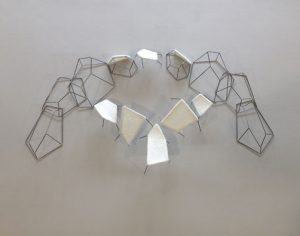 We had decided that the shoulder pieces and some of the faceted gem shape components would be covered completely in a skin of felt. While others only a singular plane would be free-motion embroidered felt (a technique characteristic of my work) or pieces of prong set vinyl record (a signature of Sarah West’s work). The forms intended for a singular plane of felt couldn’t be completed initially or I wouldn’t be able to fit them under my sewing machine’s arm to embroider them. Sarah had shown me some of her vinyl collection during a previous visit and we decided on this black and white patterned heavy metal record, which inspired my stitching.
We had decided that the shoulder pieces and some of the faceted gem shape components would be covered completely in a skin of felt. While others only a singular plane would be free-motion embroidered felt (a technique characteristic of my work) or pieces of prong set vinyl record (a signature of Sarah West’s work). The forms intended for a singular plane of felt couldn’t be completed initially or I wouldn’t be able to fit them under my sewing machine’s arm to embroider them. Sarah had shown me some of her vinyl collection during a previous visit and we decided on this black and white patterned heavy metal record, which inspired my stitching.
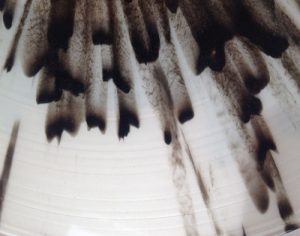
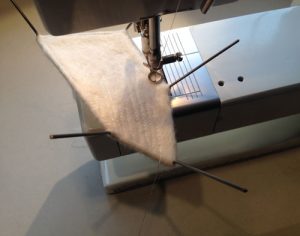
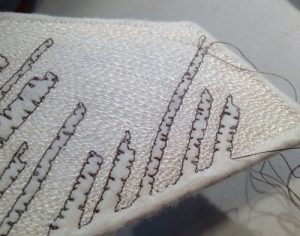

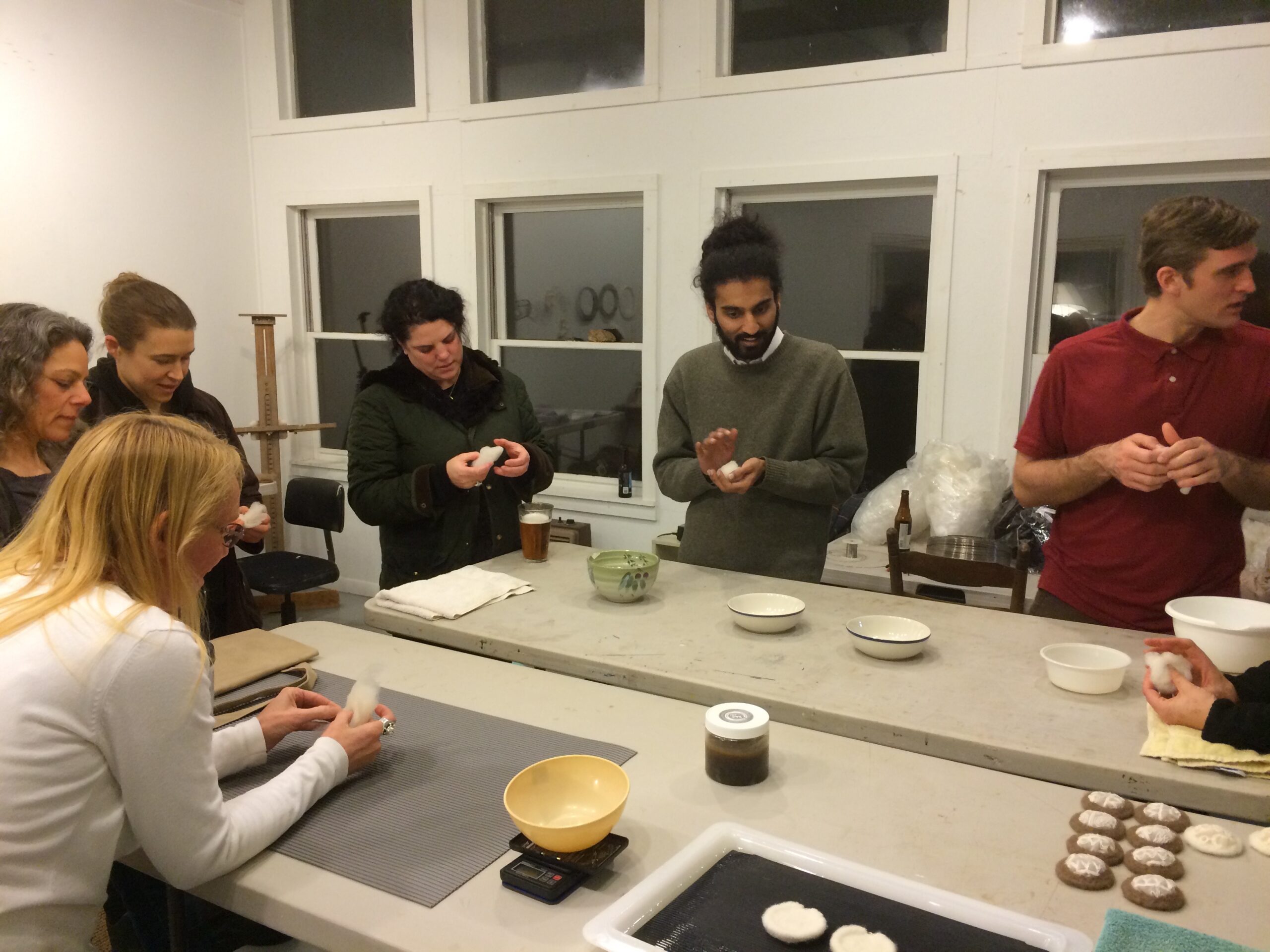
During my time at the Hambidge Center, I became rather keen on the idea of seeking out artist residencies, the traveling to reside and make work as well as situating among other artists. It has been many years since I have had a residency and I forgot the goods offered and found some goods a little different at the Hambidge.
1. I was not habituated to the studio space or locality and therefore I was offered new perspectives on space, light, color, texture, etc, as well as culture and history. Not unlike inspirations while traveling, however, I had a designated space for processing this new information and making there and then, rather than waiting until I got back home to my studio.
2. I was able to stay focused on the direction chosen, not distracted by being in my home studio with thoughts of what type of cabinet I need to build there to organize that, the handful of other studio projects I have in the works, the yard work that needed to be done, and the emails.
3. I had expected isolation and I know isolation well from my own studio practice, however, I found myself socializing in a way not common in my daily routine. For one, sharing dinners with a group of nine and two, discussing my creative endeavors among a group equally invested, yet diverse, in their art form. There were writers of fiction, non-fiction and art criticism, a photographer, a painter, an installation artist, a tapestry weaver and a musician in our mix and each, at some point in the residency, presented their work to the others.
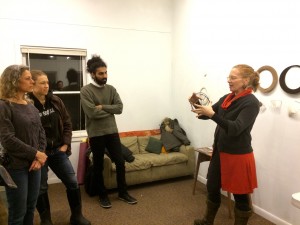
 Pictured here, I invited the other residents to the Fisher house, where I lived and worked, to see what had come to fruition during my time at the Hambidge Center and to get their hands a little wet in the felting process! My gratitude to Tommye Scanlin for sharing these pictures with me, to all the residents and staff for your interest in my work and for continuing to wonder.
Pictured here, I invited the other residents to the Fisher house, where I lived and worked, to see what had come to fruition during my time at the Hambidge Center and to get their hands a little wet in the felting process! My gratitude to Tommye Scanlin for sharing these pictures with me, to all the residents and staff for your interest in my work and for continuing to wonder.
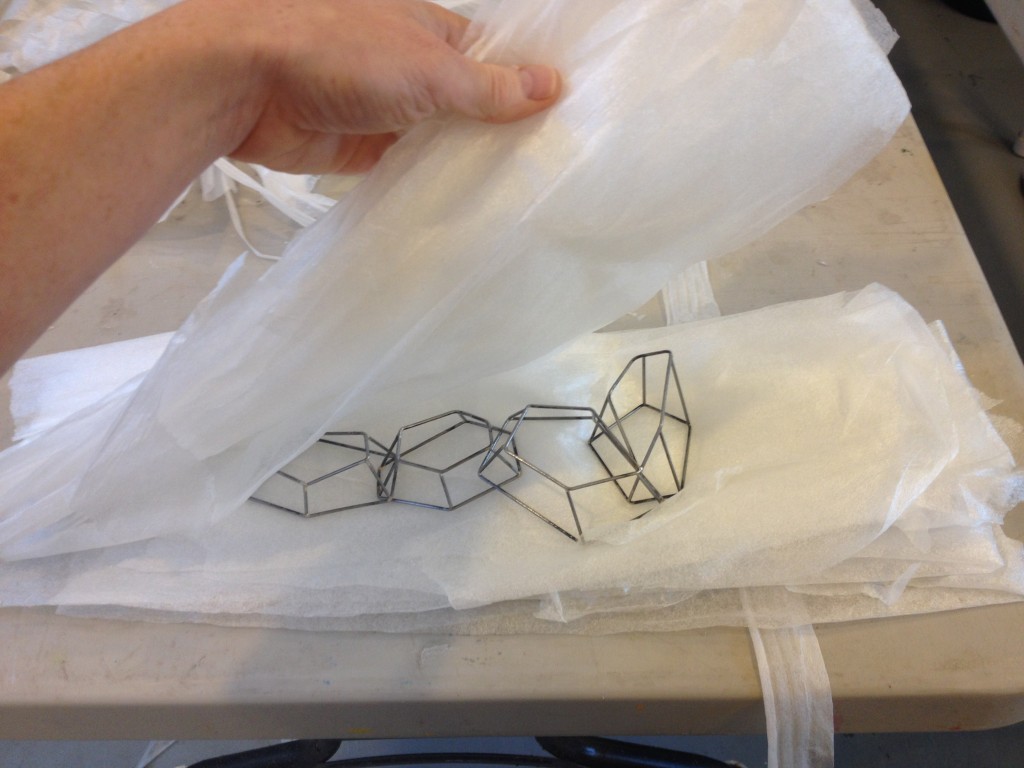
My previous blog entries about the SNAG EIM collaboration I am working on with Sarah West shared two approaches to encasing her 2-D steel frames in felt and then applying free-motion embroidery to that felt. These structures, however, were simplified components of Sarah’s striking, faceted gem forms on which she sets and manipulates pieces of vinyl records. The other approach we discussed for our preliminary explorations of combining our mediums and techniques was to, not only, entirely encase a single form, but many of them linked together.
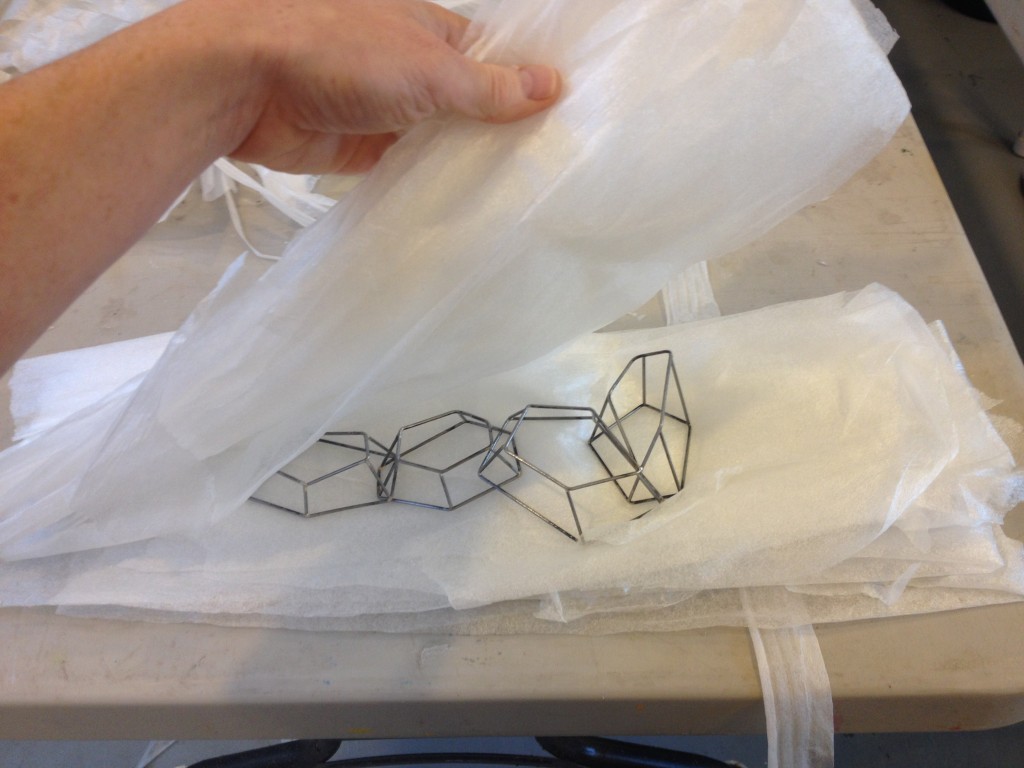 I determined the surface area of the form and calculated how much larger that area needed to be and how much wool to apply in order to achieve the % of shrinkage and quality of felt I desired.
I determined the surface area of the form and calculated how much larger that area needed to be and how much wool to apply in order to achieve the % of shrinkage and quality of felt I desired.

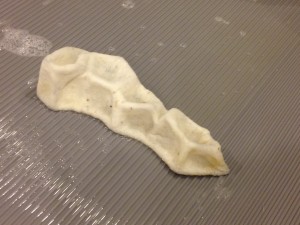
Once felting had commenced, I removed the plastic and continued to agitate the felt until it shrunk down, snug against the steel armature. The felt compressed the chain of interlinked forms, eventually suppressing its movement and the sound of that movement. I, then, hand stitched the felt around the wire to delineate the armature.
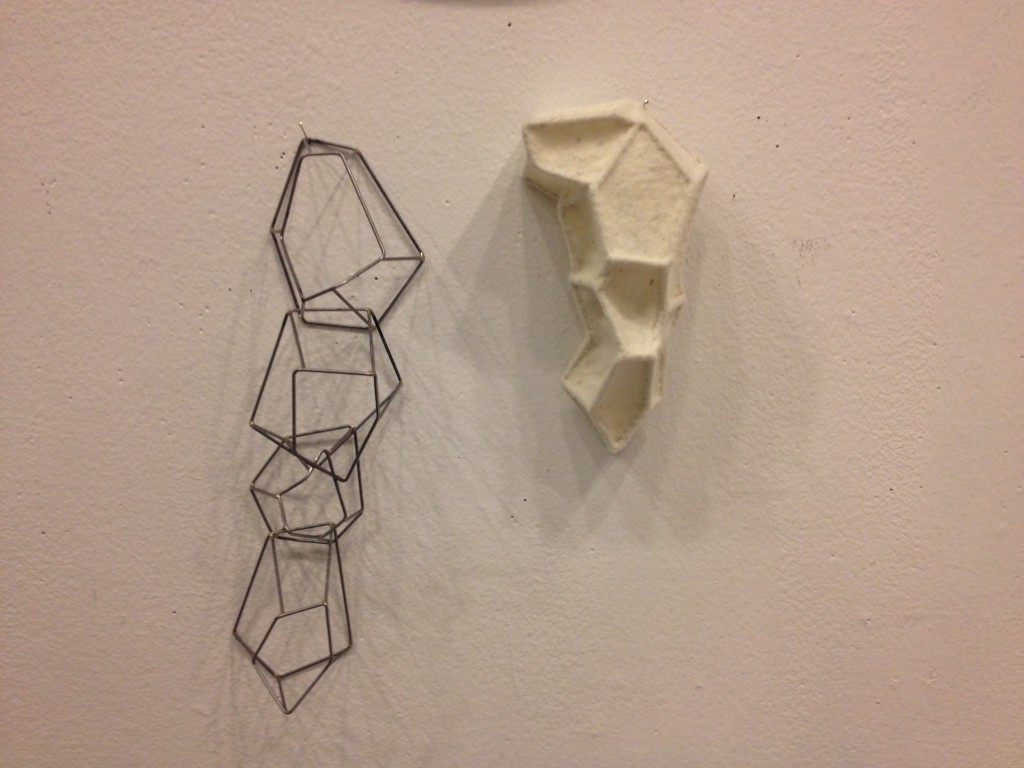
The felt encased steel structures, along with some sketches of more formal ideas I had during the making process, have been sent to Sarah. I look forward to hearing her thoughts so we can take the next steps: becoming clearer on our concept, the structure of the steel forms, the parts that will be encased in felt or set with vinyl, the surface design for the stitching, how large our format will be and how or where it will be worn. So very exciting!
Subscribe to the STRONGFELT MAILING LIST to receive quarterly newsletters (ideally!) on Lisa Klakulak’s: studio work, workshop & online course offerings, open studio events, exhibitions and publications, work with children and travel inspiration.
email : [email protected]
website by jennifer drum
© 2025 STRONGFELT. All Rights Reserved.